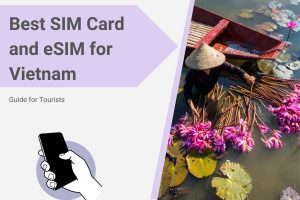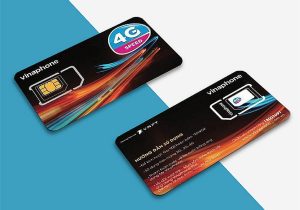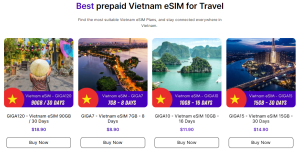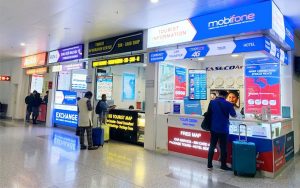Traveling to Vietnam, one of the key aspects that can enhance your travel experience is staying connected. Whether you want to share your adventures on social media, navigate through bustling cities, or stay in touch with loved ones back home, having a reliable mobile connection is essential. This is where choosing the right SIM card or eSIM comes into play. In this comprehensive guide, we will explore the best options available for travelers in Vietnam, how to purchase one, and which plans suit different travel needs, so you can focus on exploring all that Vietnam has to offer.

I. Should I Buy a SIM Card for Vietnam

One of the primary benefits of purchasing a local SIM card is the cost-effectiveness it offers. International roaming charges can be exorbitant, and using a local SIM can save you a significant amount of money. Local SIM cards provide access to affordable data plans, allowing you to stay connected without breaking the bank.
Additionally, having a local number can be advantageous for various reasons. It allows you to make local calls, receive messages, and even book services without incurring hefty fees. For instance, if you plan to use ride-hailing apps like Grab, having a local number makes the process smoother and more efficient.
Another alternative is to use portable Wi-Fi devices or pocket routers, which allow you to connect multiple devices at once. These devices can be rented at the airport or through local providers, but they may not always be as cost-effective as a local SIM card.
II. SIM vs eSIM – Which One is Better
Choosing the right mobile connectivity option while traveling can be important for staying in touch. Let’s compare SIM cards vs eSIMs to see which may work best for short-term travelers.
| Criteria | SIM card | eSIM |
| Physical card | Requires a physical nano/micro SIM card | No physical card needed |
| Activation process | Requires inserting SIM card into device | Can be activated remotely via the eSIM profile |
| Suitable for | Travelers who need a long-term local number | Frequent travelers who need temporary local numbers |
| Portability | SIM card is tied to one device | eSIM profile can be transferred across devices |
| Flexibility | Cannot easily switch providers | Allows switching providers easily from your device |
| Cost | SIM cards have an upfront cost | Some eSIM plans have recurring costs but no card costs |
| Availability | Widely available locally | Compatibility depends on device and network support |
For most tourists, eSIM has several advantages over traditional SIM cards. Since tourists usually need temporary local numbers only for the duration of their trip, eSIM plans allow great flexibility without the hassle of inserting/removing physical SIM cards when traveling between countries or changing devices. They also save on the costs of buying multiple physical SIM cards.
III. Best Vietnam SIM Card Plans for Tourists & Cost
In Vietnam, there are several major telecom providers. Each provider has its unique offerings, coverage areas, and pricing structures. Understanding these options will help you choose the best plan for your needs.
Viettel: Known for its extensive coverage and fast internet speeds, Viettel is one of the largest telecom providers in Vietnam. Their tourist SIM cards typically come with generous data allowances and affordable pricing.
| Package | Price | Data/Allowances |
| ST5K | 5,000VND (~$0.20) | 500MB for 24 hours |
| ST5KM | 5,000VND (~$0.20) | 1GB for 24 hours |
| ST10K | 10,000VND (~$0.40) | 2GB for 24 hours |
| 1N | 10,000VND (~$0.40) | 5GB/day, 10 mins on-net calls, 5 mins off-net calls |
| ST15K | 15,000VND (~$0.60) | 3GB high speed for 3 days |
| ST30K | 30,000VND (~$1.2) | 7GB high speed for 7 days |
| SD30S | 30,000VND (~$1.2) | 14GB (2GB/day) for 7 days |
Mobifone: Another popular choice among travelers, Mobifone offers a variety of prepaid plans that cater to different usage levels. Their customer service is generally well-rated, making it easier for tourists to get assistance if needed.
| Package | Price | Validity | Data |
| MFV250 | 250,000 VND (~$10.16) | 30 days | 250 GB |
| MFY | 200,000 VND (~$8.13) | 30 days | 200 GB |
| MFY200 | 200,000 VND (~$8.13) | 30 days | 100 GB |
| V180 | 180,000 VND (~$7.31) | 30 days | 240 GB |
| V90 | 90,000 VND (~$3.66) | 30 days | 30 GB |
| MBF30 | 30,000 VND (~$1.22) | 7 days | 30 GB |
| BF30 | 10,000 VND (~$0.41) | 1 day | 8 GB |
| D10 | 10,000 VND (~$0.41) | 1 day | 8 GB |
| KC90 | 90,000 VND (~$3.66) | 30 days | 1 GB |
Vinaphone: Vinaphone is known for its competitive pricing and good coverage in urban areas. They provide various packages that include data, calls, and SMS, making them a solid option for tourists.
| Package | Price | Data/Allowances |
| VD150 | 150,000VND/month (~$6.1) | 2GB/day data, ≤10min on-net calls (max 1500 mins), 80mins off-net calls |
| VD120N | 120,000VND/month (~$4.88) | 1.5GB/day data, ≤10min on-net calls (max 1500 mins), 50 mins off-net calls |
| VD100 | 100,000VND/week (~$4.06) | 8GB/day data, ≤10min on-net calls (max 1500 mins), 500 mins landline calls, 100 SMS |
| VD50 | 50,000VND/week (~$2.03) | 5GB/day data, ≤10min on-net calls (max 1500 mins), 200 mins landline calls |
| V499 | 499,000VND/month (~$20.28) | 5000 mins on-net calls, 1000 mins off-net calls |
| V399 | 399,000VND/month (~$16.21) | 4000 mins on-net calls, 800 mins off-net calls |
For reliable and affordable connectivity while travelling in Vietnam, the top choices recommended are SIM cards from Viettel and Vinaphone. Both operators have competitive pricing tailored for different usage needs, from light data bundles to comprehensive call and internet plans.
IV. Best Vietnam eSIM for Tourists & Cost
Traveling in Vietnam as a tourist means you’ll need a reliable data connection. Using an eSIM is now a convenient option as it allows you to easily purchase data packages online and have service right on your phone without a physical SIM card.
Some of the top choices for eSIMs for tourists visiting Vietnam include Vietnamesim.com, Gigago, Airalo, and Holafly. Among these, Vietnamesim.com stands out as an excellent choice. By leveraging Vietnam’s nationwide cellular networks, Vietnamesim provides extensive 3G and 4G coverage across the entire country, even in remote areas. This ensures reliable connectivity virtually anywhere.

V. Where to Buy SIM/eSIM for Vietnam?
Once you’ve decided on the type of SIM or eSIM that best suits your needs, the next step is knowing where to purchase them. Fortunately, acquiring a SIM or eSIM in Vietnam is a straightforward process, with various options available.
Purchasing SIM Cards

For traditional SIM cards, you can find them at several locations throughout Vietnam:
-
Airports: Upon arrival at major airports like Tan Son Nhat International Airport in Ho Chi Minh City or Noi Bai International Airport in Hanoi, you’ll find kiosks selling local SIM cards. This is often the most convenient option for travelers looking to get connected immediately.
-
Convenience Stores: Many convenience stores, such as Circle K and VinMart, sell SIM cards. These stores are widely available in urban areas, making it easy to find one nearby.
-
Telecom Shops: Official telecom shops for providers like Viettel, Mobifone, and Vinaphone can be found in major cities. Visiting these shops can provide you with more personalized assistance and a wider range of options.
Purchasing eSIMs
For eSIMs, the purchasing process differs slightly:
-
Online Platforms: Providers like Vietnamesim.com and Gigago allow you to purchase eSIM plans directly from their websites. This is a convenient option for travelers who want to secure their data plans before arriving in Vietnam.
-
Local Telecom Providers: Some local telecom providers, such as Viettel, also offer eSIM services. You may need to visit a store to activate the eSIM, so check ahead for availability.
VI. Tips for Saving Data on Vietnam SIM/eSIM
Once you have your SIM or eSIM set up, it’s essential to manage your data usage effectively. Here are some tips for saving data while enjoying your time in Vietnam.
-
Use Wi-Fi Whenever Possible
Many cafes, restaurants, and hotels in Vietnam offer free Wi-Fi. Take advantage of these connections to reduce your mobile data usage. Download maps, apps, and content while connected to Wi-Fi, so you can access them offline later.
-
Monitor Your Data Usage
Most smartphones allow you to track your data usage. Regularly check your data consumption to ensure you don’t exceed your plan’s limits. If you notice you’re using more data than expected, consider adjusting your usage habits.
-
Disable Background Data
Some apps continue to use data in the background, even when you’re not actively using them. Go into your device settings and disable background data for apps that don’t need constant connectivity. This can significantly reduce your overall data consumption.
-
Optimize App Settings
Certain apps, such as social media and streaming services, allow you to adjust settings for data usage. For example, you can lower video quality or limit automatic downloads. Tweaking these settings can help you conserve data while still enjoying your favorite apps.
Conclusion
Staying connected while traveling in Vietnam is essential for navigating the vibrant cities, sharing experiences, and maintaining communication with loved ones. Whether you choose a traditional SIM card or an eSIM, understanding the options available will help you make an informed decision that suits your needs. With various providers offering competitive plans, you can find the perfect solution to stay connected throughout your journey.